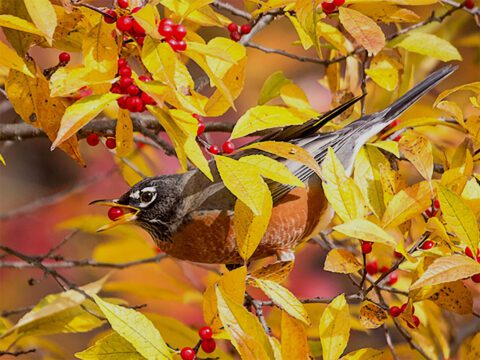Cornell Lab Taking Action to Help in the Gulf
July 15, 2010

The massive oil leak in the Gulf of Mexico is threatening human livelihoods, delicate habitats—and birds. We are using our expertise to help assess the damage and prepare for the long process of recovery.
• eBird. Our eBird program is a centralized database that allows birders to report their sightings—and enables scientists to use them for analysis. Working quickly after the spill began, we expanded eBird to allow people to report oiled birds. We also designed a spill tracker so users can see where at-risk species have been reported in relation to the spill extent. Reporting birds seen along Gulf Coast beaches is one of the few direct ways bird watchers can help respond to this disaster. See more at ebird.org.
• NestWatch. To help determine whether birds that encounter oil during migration may be affected during the nesting season, the Cornell Lab is asking bird watchers to monitor nests of Barn Swallows, Purple Martins, and other migratory birds. To learn more, visit nestwatch.org.
• Open access to literature on at-risk birds. Working with the U.S. Fish and Wildlife Service, we’ve opened free access to Birds of North America Onlineaccounts for 34 Gulf Coast bird species. Researchers, reporters, survey teams, and anyone else can use these definitive scientific accounts to find answers about the lives, needs, and habits of birds ranging from Brown Pelicans to White Ibises, and Clapper Rails to Roseate Spoonbills. Visit Birds of the World.
• Whale surveys. In June, the Cornell Lab’s Bioacoustics Research Program (BRP) sailed on the NOAA ship Gordon Gunter to deploy underwater listening devices in the Gulf of Mexico. Their goal is to detect marine mammals that live in the Gulf, including sperm whales and Bryde’s whales, by the noises they make. BRP director Chris Clark says little was known about the Gulf’s complex underwater ecosystem even before the oil blowout began. The devices will gather information about population sizes and allow comparison with where oil is detected. The units will be anchored on the seafloor in an arc stretching from western Louisiana to south Florida. BRP will analyze the recordings when they retrieve the units in the fall.
• Video teams and blog. A team of biologists and videographers visited Louisiana from May 31 to July 20. They videotaped the region’s thriving birdlife as well as the encroachment and effects of oil. It’s part of our commitment to help with recovery and monitoring of the oil spill’s long-term effects—and to ensure that the details of this disaster do not escape notice. We’ve posted slideshows and field reports on our Round Robin blog and our YouTube channel.
Learn more at www.birds.cornell.edu/helpbirds.
Originally published in the Summer 2010 issue of BirdScope.


All About Birds is a free resource
Available for everyone,
funded by donors like you






